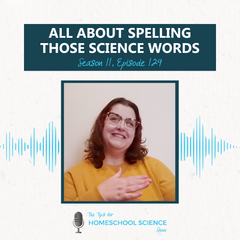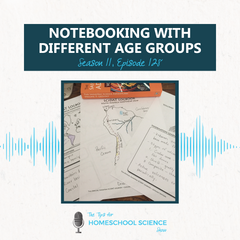FREE Shipping on all our products! (Please Note: Orders may experience a delay of a week or more in shipping due to the high volume of orders at this time of year.)
FREE Shipping on all our products! (Please Note: Orders may experience a delay of a week or more in shipping due to the high volume of orders at this time of year.)
What do I do if I find classical education mid-cycle? {Episode 26}
April 24, 2017 2 min read
What do I do if I find classical education mid-cycle? {Episode 26}
So, you have just stumbled upon this wonderful method for homeschooling called classical education. And you want to get going, but your student falls in the middle of a stage, where do you begin?
In this episode of the Tips for Homeschool Science Show, I'll be answering that question and more!
Listen to this episode
Share the Tips
If you found these homeschool science tips to be helpful, would you please take a moment to rate it on iTunes or Google Play? This would help me tremendously in getting the word out so that more ear buds are filled with science-teaching encouragement.
The Highlights

Your Dilemma
Do you dive in mid-cycle for your student’s stage?
Do you start at the beginning of a cycle even though you are mid-stage?
Before I share the options, we should cover the basic lingo so you know what I mean when I say “cycle” and “stage”.
- Classical education divides the traditional school years into three stages – grammar, logic (or dialectic), and rhetoric stages.
- Within each stage, you use a cycle of learning. For science this means that in year 1 you cover biology, year 2 you cover earth science and astronomy, year 3 you cover chemistry, and year 4 you cover physics.
Option #1 - Start at the beginning
To begin at the beginning always seems like the most logical choice.
Here are the pros and cons of this option:
Pros
- You will begin at the beginning.
- Your students will have covered an entire cycle before starting another one.
Cons
- You begin a cycle mid-stage, which can complicate finding materials.
Option #2 - Dive in mid-cycle
The most common way to get going with classical education is to just begin mid-cycle where your student would typically place.
Here are the pros and cons of this option:
Pros
- You will be where the experts suggest that you should be.
- It will be easier to find age appropriate curriculum options.
Cons
- Your students won’t have the benefit of the knowledge from the previous years in the cycle.
The Bottom line
Either option you choose will work just fine.
Additional Resources
To learn more about classical education, check out the following:
- Ep 25: What does science look like for the classical educator?
- The Ultimate Guide to Science in Classical Education
- The Well-Trained Mind: A Guide to Classical Education
Want to make teaching classical science easy? We offer a full line of science programs for the classical educator!
Also in {Podcast} The Tips for Homeschool Science Show
All About Spelling Those Science Words {Season 11, Episode 129}
March 25, 2024 7 min read

In this episode, we'll be interviewing Robin Williams from All About Spelling. Click "Read More" to listen is as we discuss tips and tricks for spelling all those science words!
How should you handle notebooking through the different ages? {Season 11, Episode 128}
March 18, 2024 3 min read

Writing in Science with a Well-Trained Mind (Interview) {Season 11, Episode 127}
March 11, 2024 16 min read

Click "Read More" to listen in as Susan Wise Bauer and Susanna Jarret join Paige to share tips and tools about the third key to teaching science!
Subscribe
Sign up to get the latest on sales, new releases and more …

